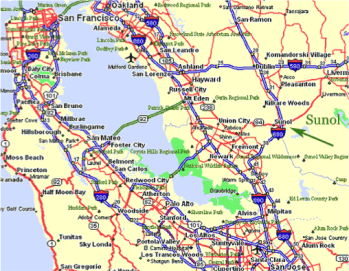Tim Matthews's Blog, page 8
June 28, 2015
Is Growth Hacking a Marketing Function or a Mindset?
Around the time I was making my final edit to the chapter on building a marketing department in The Professional Marketer, I happened to be part of a number of conversations on the “growth hacker,” aka “growth hacking.” The job title “growth hacker” wasn’t in the chapter, and I wondered if it should be.
 For those not familiar with growth hacking, it is “a marketing technique developed by technology startups that uses creativity, analytical thinking, and social metrics to sell products and gain exposure.” The term was coined by Sean Ellis, and popularized in a blog post by Andy Chen called, provocatively, “Growth Hacker is the New VP of Marketing.”
For those not familiar with growth hacking, it is “a marketing technique developed by technology startups that uses creativity, analytical thinking, and social metrics to sell products and gain exposure.” The term was coined by Sean Ellis, and popularized in a blog post by Andy Chen called, provocatively, “Growth Hacker is the New VP of Marketing.”
Most marketers looking at the above definition could not be blamed for wondering what’s new. Growth hacking is marketing. The primary tactics of growth hacking are SEO, social media, A/B testing, direct marketing, and viral marketing. These are all well understood by marketers and marketing teams, and depending on the organization, live in the online marketing and demand generation teams. So why a new role?
Growth hackers point out that what they do is different because they build conversion directly into the product. Hacking, in the positive usage, means clever, agile software development. Growth hackers typically build optimal sign up pages or viral features directly into their products.
The focus on coding sets up engineering versus marketing conflict: Marketers can’t be growth hackers because they can’t code. More than a few blogs and articles throw gasoline on the fire with statement like “formal budgets make marketers lazy” and “traditional marketers are not innovative.”
I agree with Aaron Ginn’s viewpoint below. He recognizes the newfangled title for what it is – marketing.
Growth hacker is a new term for most, but a long held practice among the best Internet marketers and product managers in Silicon Valley.
I take issue with Andy Chen’s statement.
The new job title of growth hacker is integrating itself into Silicon Valley’s culture, emphasizing that coding and technical chops are now an essential part of being a great marketer.
I would agree that knowing your product and knowing your customer are, and always have been, essential to being a great marketer. Suggesting that coding is an essential piece is – I think – pandering to developers fancy themselves as marketers. I have a degree in computer science, but not once did I think that spending time brushing up on Java or Ruby would be more important than thinking about my market and my customers every day.
I think many growth hacking proponents have forgotten that the product itself is part of the marketing mix, just like the other of the Four P’s: price, place and promotion. Creating a product feature that drives adoption is definitely not new.
So how should a VP of Marketing think about growth hacking when designing a marketing team? My thinking is that if you are building a Web, Cloud or mobile product where the goal is to convert thousands or tens of thousands of people, then having a dedicated growth hacker could help. So long as the person understands the product and the market, he or she can be part of the product team, development team, or marketing team.
If you sell to businesses, require fewer conversions, or use online marketing to drive demand for a physical product, then push your online marketing team to drive growth. To the extent you can build features into your product to promote sharing, virality or conversation, do so. Have your product or brand management team specify what I call “growth features” for your development or manufacturing team to build. Growth features are those features designed to drive adoption, rather than deliver utility. You can also create a cross functional “growth team” with representatives from sales, marketing, development and product/brand management.
Thinking about growth, and creating teams to drive growth, is a positive thing. I had assumed most companies think about this every day, but if we are flagging in that area as a profession, I am not against a renewed emphasis on growth to keep the peace and drive prosperity. To that end, I see growth hacking as a marketing mindset, not a marketing function.
What do you think? Do you have growth hackers in your marketing department?
* * *
Photo courtesy of Observe the Banana


June 15, 2015
Six Lessons Learned Managing Agile Marketing Teams
Are you interested in adopting agile marketing, but unsure if it will fit with your organization’s culture? Or, perhaps you started and it’s not working. Having practiced agile for several years now, I can fully recommend it, but there are few gotchas to avoid.
For those still not fam iliar with the concept of agile marketing, which is borrowed from software development, the idea is to create time-bound sets of objectives, prioritize them critically, and measure achievement frequently. Here’s how Jim Ewel puts it in his Agile Marketing blog:
iliar with the concept of agile marketing, which is borrowed from software development, the idea is to create time-bound sets of objectives, prioritize them critically, and measure achievement frequently. Here’s how Jim Ewel puts it in his Agile Marketing blog:
Agile marketers follow a process, a process designed to increase alignment with the business aims of the organization and the sales staff, to improve communication, both within and outside the marketing team, and to increase the speed and responsiveness of marketing. The process copies that of agile development, with some differences in the details. This process is iterative, allowing for short marketing experiments, frequent feedback, and the ability to react to changing market conditions.
The biggest differences from conventional marketing operations are a) you move from yearly or quarterly planning to monthly or weekly planning, b) you are much more ruthless in your prioritization, and c) marketing meetings become much more objective. Are we done? Did it work? What’s blocking?
Aside from speed, the other great benefit of agile is that it helps with interactions between marketing and sales. Sales teams in high tech, where agile is most prominent, are used to tradeoffs with engineering: you only have so much time, money and people to build the product. Which leads to easier prioritization. Which features do you need from this sprint?
Marketing can use agile the same way: Of the ten things your team asked for, we only have resources for five – which are the most important? This gets rid of what I call the data-sheet-of-the-week syndrome, aka the if-I-only-had-[fillinassetname]-I-could-close-this-deal syndrome.
Sold? If so, here are six lessons I learned managing agile marketing teams at two companies. I hope they help you get the most out of what I think is a great concept.
Set the right cadence – Decide the cadence that works for your team. Just because software development teams have daily standups doesn’t mean you have to. Personally, I think daily is too frequent for marketing teams. It’s just hard to get anything meaningful done in a day, and the updates would just be repetitive. I’ve used monthly objectives and weekly updates.
Take a break – Agile marketing can be a bit of a grind. Even weekly updates can get a little monotonous, because some projects take several months to complete. Hearing that a new sales video is in production several weeks in a row is not that informative. So, give your team a break every once in a while. Skip the weekly update and use your weekly meeting for something else, like an overview of marketing experiments you have done or a guest speaker.
Insist on metrics – Each objective or activity needs to have a goal target and metric. Get the team asking “Why am I doing this activity, and how will I know it worked?” If they can’t answer the question, should it be on your list of objectives?
Prioritize realistically – As I’m writing this, our monthly objectives take fifty some rows in a Google Doc. That’s a lot. After about two quarters, I noticed people on my team including objectives like “Write blog posts,” and “Go to trade show.” These are not only too generic, but hard to prioritize. Per the goal setting point above, if it’s not something you can attach a goal target and metric to, ask whether it’s a high enough priority to have on the list. If you don’t nip this behavior in the bud, don’t blame me if “Show up to work” appears on your monthly list.
Don’t allow overly aggressive goals – Especially with newer employees, I noticed they would set very aggressive monthly objectives. Too aggressive to actually achieve. Set the balance between getting enough done and killing people (which will make you unpopular with your team and HR). Let them know that realistic objectives mean high completion, which is the goal. I’ve also had to fight staff simply moving objectives to the next month. “Oh well, didn’t get that done, I’ll just move it to next month” defeats the purpose of agile. You need to fight that as a head of marketing. Put down reasonable objectives and hold people to them.
Stop the work volume competition – The “I have more objectives than you” game was amusing. I noticed an unspoken competition going on, with the Type A folks throwing in more and more objectives to “win” on the spreadsheet. Sometimes, these took the form of generic objectives without goals, and were easily removed by yours truly. Other times, I would tell the employee that if I started seeing slippage then I was going to set their goals for them. Most of the time, simply having a word with the employee and stressing quality over quantity did the trick.
Keep in mind that agile marketing will be new to a lot of your staff. You should clearly explain not just the concept, but also the objectives. Explain how it will help the team better negotiate with sales, and explain to your managers the benefits of monthly tracking of their employees’ activities. You may want to set a metric for the agile program itself, such as increasing team efficiency, reducing time spent in planning meetings, or increasing sales satisfaction with timely, quality assets.
Once implemented, you should candidly asses how it is working. Is productivity up? Is the team better able to prioritize and measure results? Are your conversations with your sales VP peer easier?
Have you managed an agile team? I’d love to hear what you learned.


June 9, 2015
Three Ways to Goose Conversion and Fight Churn in SaaS
Another excerpt from my forthcoming SaaS Marketing Handbook – TM
Nurturing
 Nurturing is the process of moving a lead closer to a sale through continued marketing. Nurturing is not unique to SaaS marketing, but it is especially important. Prospects in your database who are not yet ready to buy need to be “nurtured” until they are ready to buy. Email marketing is the most common form of nurturing. The trick is to understand what type of content is of interest, and how many times – touches – a prospect needs to see your content before they are ready. It may take five or ten touches before a prospect is ready. Make sure the content is valuable and you are not spamming them, or nurturing could backfire. But do some form of nurturing – it’s much more expensive to acquire brand new prospects than work with ones already in your database.
Nurturing is the process of moving a lead closer to a sale through continued marketing. Nurturing is not unique to SaaS marketing, but it is especially important. Prospects in your database who are not yet ready to buy need to be “nurtured” until they are ready to buy. Email marketing is the most common form of nurturing. The trick is to understand what type of content is of interest, and how many times – touches – a prospect needs to see your content before they are ready. It may take five or ten touches before a prospect is ready. Make sure the content is valuable and you are not spamming them, or nurturing could backfire. But do some form of nurturing – it’s much more expensive to acquire brand new prospects than work with ones already in your database.
A/B Testing
Optimization is critical in SaaS marketing. The most basic technique is called A/B testing, which Direct Mail Techniques. In the case of email, marketers send out two variants simultaneously, known as “A” and “B.” These variants might contain two different subject lines, offers, copy, or layouts. Alternatively, they might send the same copy to two different lists—perhaps different age groups or cities—using a tracking mechanism to ascertain which demographic generates more responses. The marketer then adopts the “winner” of the A/B test as the preferred direct mail piece. The idea is to change just one thing in each A/B test, send it out to a limited subset of your list, pick the winner, and then continue tweaking. The new B is sometimes called the “challenger,” and the A is the “champion.” A/B testing can be used for web pages, landing pages, registration or sign up forms, pay-per-click ads – almost anything marketing creates.
Customer Success
Customer success is a company-wide approach to ensuring new customers are on boarded successfully. The most important goal is to ensure prospects are able to use the software productively during the trial period, and that recently-signed customers are able to roll it out successfully in their organizations. Some companies have created a new position of customer success manager that is part system engineer, part support, and part customer service. A customer success manager’s job includes making sure customers are making good progress on adoption, are engaged, and most importantly, are realizing the business results they expect from your solution.
A whole new crop of Customer Success Tool Comparison has emerged that allows SaaS vendors to monitor the progress of a prospect during a trial and alert the customer success team of issues such as continued errors or failures, or simply lack of use. Customer success managers may also play a part in the renewal process, depending on the company.
Have others SaaS marketers should know about? I’d like to hear.


May 26, 2015
How SaaS Affects the Marketing Mix
Not All of Your Tactics Will Be Change, But the Emphasis Will Shift
While the SaaS business model is quite different from sales of perpetual software licenses, the marketing tactics are not entirely unique. SaaS companies still go to trade shows, have customer newsletters, and engage in direct marketing. The real difference is not in the tactics, but the emphasis on those tactics in the marketing mix. Here are a few guiding principles of how the buying cycle is different, and the resulting impact on the marketing mix.
Marketing Carries More of the Load – The new IT buyer may be 50 to 75 percent through the buying cycle before they are turned over to sales, according to Forrester and other sources. The new term for this is inbound marketing. In some cases, the marketing department will be responsible to creating the 100 percent of demand flow and the customer signup that turns into the sale itself. So, no more back seat to the sales department – marketing is in the driver’s seat.
Transactional Sales – Many SaaS products generally have a lower price point, or at least a lower-priced entry point. Vendors of this type of product need to think about large numbers of transactions, as opposed to the larger deal focus of enterprise software companies. Generally, SaaS companies are looking to sign up users for a trial or demo, and then move them toward a sale, as opposed to simply setting up a meeting for one of their sales people. There will be much more emphasis on online marketing and email nurturing, and a greater focus on optimizing the website for conversion.
Customer Self-Education – With more of the sale happening before a sales rep ever speaks to a prospect, or with no sales rep involved at all, more emphasis will be placed on materials to help the customer educate themselves during the sales process. Contrast this with the amount of time and energy spent on creating sales tools and conducting training. With the emphasis on customer self-education, more of the marketing mix will skew toward content marketing with the aim of educating the customer on a topic relevant to the product, as well as the company’s product. HubSpot, a SaaS marketing automation company, spends a lot of time and money creating educational content on marketing best practices. Blogs and online tools will increase in importance.
Customer Retention – In the conventional software model, the customer pays more up front to acquire a perpetual license, then pays a much smaller support and maintenance fee (usually 20 to 25 percent) after that. With SaaS, the customer renews at 100 percent of ACV every year, and your business model may depend on making back your CAC in years two or three. So, SaaS marketing teams are much more focused on renewals. Customer communication is that much more important a part of the marketing mix.
Online versus Channel Distribution – It used to be that software companies needed value added distributors and their resellers to scale. Now the Internet provides the scale. Partners will be sought for industry expertise or integration capabilities more so than for distribution reach.Note that as buyers of perpetually licensed, or on-premise, software are increasingly involved in the purchase of SaaS products, the emphasis seen in the SaaS marketing mix will no doubt have an influence on conventional software and hardware marketing, further blurring the lines
How about you? Experienced anything else different with SaaS marketing?


April 27, 2015
The Roadmap to SaaS Marketing Maturity
SaaS nirvana is a tempting, alluring place. Stories abound on TechCrunch, Forbes and other tech business press about the fortunes of those who make it. Multiples for SaaS IPOs tend to be among the highest in the tech industry. So there is a palpable pressure in a SaaS marketer to get there as fast as possible. But pushing against this headlong rush to El dorado is another force, a discipline required to get it right before growth – the ramp – kicks in. You can burn a lot of money if you don’t get it right.
 Here’s a model I’ve developed after three SaaS head of marketing gigs. The idea is to demark what stage the company and product are in, and therefore what is required of marketing. It can feel like a chicken and egg problem, and there can be a lot of finger pointing. Is it the marketing or the market? Do we need to change the product or get more people to try it? Why can’t sales close more deals?It’s important to understand the stages of SaaS sales maturity and communicate them to everyone in the organization. Knowing what stage you are helps focus the team on the goals that are important, and put off those things that are not.
Here’s a model I’ve developed after three SaaS head of marketing gigs. The idea is to demark what stage the company and product are in, and therefore what is required of marketing. It can feel like a chicken and egg problem, and there can be a lot of finger pointing. Is it the marketing or the market? Do we need to change the product or get more people to try it? Why can’t sales close more deals?It’s important to understand the stages of SaaS sales maturity and communicate them to everyone in the organization. Knowing what stage you are helps focus the team on the goals that are important, and put off those things that are not.
In order to achieve better team alignment, I recommend using these five stages. Agree what you are trying to solve for, and agree when you are ready to move from one phase to another. In general, marketing will need to provide content, some degree of awareness, and some demand generation in all five phases, but your level of investment and tactical focus will vary. Demand generation in the Product/Market Fit phase may simply be getting meetings for your CEO and head of product to discuss possible directions with prospective customers, for example.
The SaaS Marketing Maturity Model
Product/Market Fit – Finding buyers who want your product is the goal of any business. SaaS is no different, except the online delivery model affords faster product changes. During this phase of growth, the whole company needs to make whatever changes are needed to make the product indispensable to an identified set of buyers. Marketing should focus on market and buyer research, customer interviews, and competitive analysis during this phase.
Exit Criteria – A company can exit this phase when a significant percentage of customers finds the product indispensable and marketing can identify the profile of an ideal customer. (Sean Ellis, a well known SaaS marketer, uses less stringent criteria, requiring 40% of your customers to be “very disappointed” without your product.)
Timeframe – 6-18 months. Some companies will find product/market fit faster than others. Many will need to significantly change the product – referred to as a “pivot” – at least once. Forbes has a great article about business pivots, including Twitter’s transformation from podcast finder to microblogging service, and PayPal’s move from beaming payments from PDAs (digital handheld computers) to helping eBay users pay sellers over the Web.
Experimenting for Growth – Once you have product market fit, you need to figure out the best way to reach your ideal customers. Marketing should focus on crystalizing the value proposition, gleaned from discussions with existing customers. Close interaction with the sales team is really important – interview them and also sit in on sales calls to find out what really resonates with customers. The team should also begin marketing via a few different channels and do some rough A/B testing experiments to see what works best. The goal is to supply enough leads to feed the sales team.
Exit Criteria – A company can exit this phase when it can demonstrate a few marketing channels and marketing pieces that demonstrate superior performance in closing deals.
Timeframe – 3-12 months.
Optimizing for Growth – Building on successes, optimize conversion rates at all possible points. Invest even more money in channels that are generating the highest conversion rates. Get even more aggressive with A/B testing: conduct more tests, make the experiments finer grained, and get into a continuous improvement cycle. Evaluate each channel in the context of your business economics. Some channels may convert well but cost more. Make sure you can “afford” each channel by comparing it with your CLV. Throw out any channels that are ROI negative over the customer lifetime, and shift investment into those that are ROI positive in the shortest timeframe. The goal is to move beyond just supplying enough leads, but to mature to know which channels produce the best leads.
Exit Criteria – Organizations can exit this stage when they know their top converting channels and marketing assets, and know that money invested in these top channels will produce more demand and profitable customers.
Timeframe – 6-12 months.
Predicting Growth – With top channels and conversion rates known, marketing can predict future revenue based on marketing activity. Testing and optimization can continue, but a head of marketing should invest in people and tools with a focus on metrics and reporting. Marketing may begin to pay more attention to churn rate here, keeping a close eye and putting in place programs to reduce churn as much as possible. By this stage of maturity, the ARR has become a big enough number that a high or growing churn rate would be a problem. To reduce churn, marketing might invest more in a customer marketing function to improve customer satisfaction, or work with the product team to figure out features that increase the product’s stickiness. Achieving negative churn through aggressive upsell and cross sell might even be possible. By this stage, marketing should have matured to measure leads by channel and by cohort.
Exit Criteria – Organizations can exit this phase when they have two or three quarters of accurate revenue prediction by marketing and there is alignment that churn rate has settled at an acceptable level.
Timeframe – 6-9 months.
Driving Growth – With a tuned and predictable demand generation machine, the marketing team can be a growth driver. ARR should be well understood, and churn should be stabilized.
The timeframes above are general, but based on discussions with several SaaS CEOs and CMOs. Heads of marketing should focus on gaining consensus on what phase of growth the company is in and the activities marketing is focusing on. Maturing takes time. Executive teams may grow restless and want to move on, but until you have the time in the market and the data to back up your experiments, forecasts and predictions, you just won’t know if you were right. Marketing may need to stand tall and insist on discipline from other teams that want to skip phases or are looking for magic to happen.
Have thought on the model? Were your experiences different? I’d like to hear.


April 22, 2015
Five SaaS Marketing Pitfalls to Avoid
This is an excerpt from my forthcoming SaaS Marketing Handbook -TM
I have fallen into almost every one of these pits. Some of them more than once. I’ve learned the hard way that you need to clearly set expectations, and under promise and over deliver, to be successful as a SaaS marketer.
Pitfall #1
“[Person’s name] a [Board Member | Friend of Mine | Fellow CEO | Next Door Neighbor] told me they are getting a [fill in ridiculously high number] conversion rate for [fill in a dollar amount that’s zero to implausibly cheap]. Why can’t we do that?” Make sure you are comparing apples to apples and you get documented proof of said conversion rate. People commonly confuse all of the different conversion rates, conversions versus clickthroughs, cost per name versus cost per qualified lead, and any number of any things. Also, conversion rates have a shelf life. Technology and user habits are constantly changing, so conversion rates from more than a year or two back should be scrutinized before they are trusted.
Pitfall #2
No money. Going back to Dispelling SaaS Marketing Myths, SaaS marketing costs money. More often than not, the ways you generate conversions early – by tweaking the signup, SEO and blogging – will take people, the most expensive thing of all. Once you are past that phase, you need more people and more money to grow. So, be wary of a SaaS startup that does not have significant money to invest in marketing.
Pitfall #3
No or bad data. You will need software and people to gather and analyze data. Make sure you have staff, tools, and access to stats from your website, product and CRM. And you are never done collecting, cleaning, or analyzing data, so make it part of your marketing routine, not an annual exercise. Corollary – collect your own data and do your own analysis lest others do it for you (Trust me, the analysis of others will never be better…)
Pitfall #4
Using marketing metrics with business people. Lesson: Use business metrics. The nice things about SaaS is that common understanding of the importance of metrics, and the straightforward revenue and churn metrics you can use to align sales, marketing and development. Conversations about cohorts and multi-touch nurturing should wait until the whole executive team is on the same page with ARR/MRR, churn and your magic number. I have found that conversations about MQLs, multi-touch attribution and other marketing metrics are less effective, and require significant education of the exec team.
Pitfall #5
Doing traditional marketing for a SaaS business. Trade shows. Printed materials. Field marketing. Change it up, lest you be considered a dinosaur.
Fallen into any others? Would love to hear about it.


April 18, 2015
Four SaaS Marketing Myths
This is an excerpt from my forthcoming SaaS Marketing Handbook -TM
Like an y business model that has made billions for executives and shareholders, SaaS has its own mythology. Stories heard in the boardrooms of SaaS titans have been passed down to aspiring SaaS CEOs. Ambitious CMOs who want a piece of the SaaS game often burnish their conversation stats. Which is to say, be wary of SaaS war stories. Make sure to separate history from lore. Here are four common SaaS marketing myths dispelled. Read these first lest you be burned.
y business model that has made billions for executives and shareholders, SaaS has its own mythology. Stories heard in the boardrooms of SaaS titans have been passed down to aspiring SaaS CEOs. Ambitious CMOs who want a piece of the SaaS game often burnish their conversation stats. Which is to say, be wary of SaaS war stories. Make sure to separate history from lore. Here are four common SaaS marketing myths dispelled. Read these first lest you be burned.
Myth I – It’s cheap
Reality – People are the most expensive components of the marketing mix, and it takes more people and more work to acquire customers in a SaaS model. The amount of content required, frequency of changes made to your websites and microsites, and the collection and analysis of data all take significant manpower and expense. Just look at the IPO registration filings of young SaaS companies and you will see just how much it costs. In fact, it can be several times the typical marketing spend of an enterprise software company. Thomasz Tomguz, a venture capitalist with Redpoint, has an excellent analysis of sales and marketing spend of 34 public SaaS companies. In their first three years, these public SaaS companies spend between 80 to 120 percent of their revenue in sales and marketing!
Myth II – It’s fast
Reality – You can get started quickly without a large upfront investment, but getting good takes a long time. SaaS marketing is a game of continued refinement and measurement. As I discuss in my Roadmap to SaaS Marketing Maturity, each phase of development can take several quarters.
Myth III – Automation makes it easy
Reality – Yes, there are amazing tools that are very affordable, and sometimes free. But everyone else is using those tools too. You still need to get the basics right: a good product, a good offer, a solid understanding of your buyer and their needs, and good execution. This is hard work. Also, all of the A/B testing and experimenting is, in my opinion, more work than marketing teams have ever done before. Think of it this way: for every one deliverable marketing teams used to produce, they have to produce at least twice the amount – an A and B – and perhaps an ever-evolving version. I would argue that automation only raises expectations.
Myth IV – SaaS means freemium
Reality – SaaS is a delivery model. Freemium is an acquisition model. And freemium is only good for certain products. Many complex products, such as SaaS accounting packages, require a more conventional enterprise software sales approach.
Have any others to share? I’d like to hear them, and maybe include them in the book.


Five SaaS Marketing Myths
This is an excerpt from my forthcoming SaaS Marketing Handbook -TM
Like an y business model that has made billions for executives and shareholders, SaaS has its own mythology. Stories heard in the boardrooms of SaaS titans have been passed down to aspiring SaaS CEOs. Ambitious CMOs who want a piece of the SaaS game often burnish their conversation stats. Which is to say, be wary of SaaS war stories. Make sure to separate history from lore. Here are four common SaaS marketing myths dispelled. Read these first lest you be burned.
y business model that has made billions for executives and shareholders, SaaS has its own mythology. Stories heard in the boardrooms of SaaS titans have been passed down to aspiring SaaS CEOs. Ambitious CMOs who want a piece of the SaaS game often burnish their conversation stats. Which is to say, be wary of SaaS war stories. Make sure to separate history from lore. Here are four common SaaS marketing myths dispelled. Read these first lest you be burned.
Myth I – It’s cheap
Reality – People are the most expensive components of the marketing mix, and it takes more people and more work to acquire customers in a SaaS model. The amount of content required, frequency of changes made to your websites and microsites, and the collection and analysis of data all take significant manpower and expense. Just look at the IPO registration filings of young SaaS companies and you will see just how much it costs. In fact, it can be several times the typical marketing spend of an enterprise software company. Thomasz Tomguz, a venture capitalist with Redpoint, has an excellent analysis of sales and marketing spend of 34 public SaaS companies. In their first three years, these public SaaS companies spend between 80 to 120 percent of their revenue in sales and marketing!
Myth II – It’s fast
Reality – You can get started quickly without a large upfront investment, but getting good takes a long time. SaaS marketing is a game of continued refinement and measurement. As I discuss in my Roadmap to SaaS Marketing Maturity, each phase of development can take several quarters.
Myth III – Automation makes it easy
Reality – Yes, there are amazing tools that are very affordable, and sometimes free. But everyone else is using those tools too. You still need to get the basics right: a good product, a good offer, a solid understanding of your buyer and their needs, and good execution. This is hard work. Also, all of the A/B testing and experimenting is, in my opinion, more work than marketing teams have ever done before. Think of it this way: for every one deliverable marketing teams used to produce, they have to produce at least twice the amount – an A and B – and perhaps an ever-evolving version. I would argue that automation only raises expectations.
Myth IV – SaaS means freemium
Reality – SaaS is a delivery model. Freemium is an acquisition model. And freemium is only good for certain products. Many complex products, such as SaaS accounting packages, require a more conventional enterprise software sales approach.
Have any others to share? I’d like to hear them, and maybe include them in the book.


March 3, 2015
SaaS Marketing Maturity Survey

If you are an experienced SaaS marketer, head of sales, founder or exec, I’d like to hear from you. How long did it take to get to product/market fit? How long before you knew your top converting marketing channels? When did you have a reliable dashboard? These are all parts of what I think of as a mature marketing process.
There are 12 questions that should take 5-10 minutes to complete. Take the survey here. Thanks for your input.
Keep an eye on this blog for the results.

March 1, 2015
Marketingspeak: What is ‘Agile Marketing’?
Have you noticed the growing ‘Agile Marketing’ trend? Adapted from a popular software development methodology, agile marketers set goals and objectives monthly and work on them in monthly “sprints.” The idea behind agile marketing is to adapt quickly and achieve results fast. It is suitable for companies that are in rapidly changing, perhaps highly competitive, markets. Even if a company chooses to work in this way, an annual plan that sets the “arc” for the year is still a good idea. Also, almost every company has an annual revenue target that marketing will need to support.






